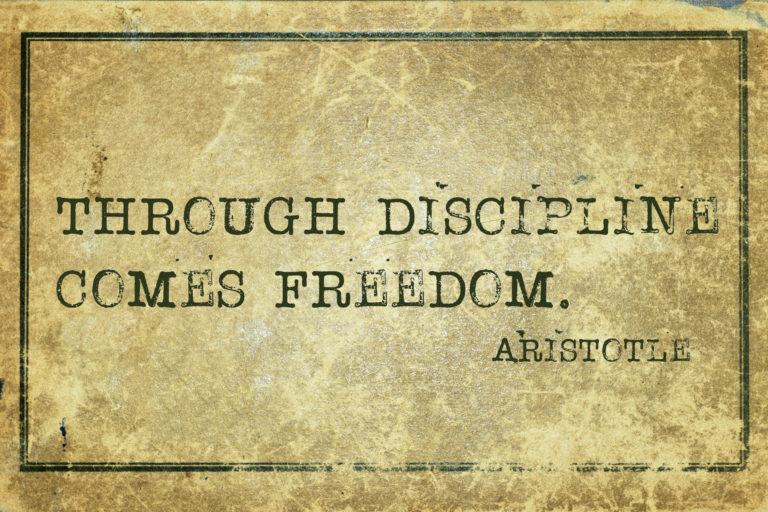Self Ownership Part 2
A good mental framework to have is that instead of you pushing towards accomplishing goals, you think about what things you have to “pull” to get to the end game. The subtle shift in the thinking will position you to find more creative solutions to problems. A very frequent problem with management who doesn’t really know how to solve problems is saying things like “work harder”. If we just turn up the Hard Work Dial to 11, then the problems will go away, obviously. Instead if we looked at what is stopping the success and actively worked on removing those problems, we’d be able to remove the stress of failure without having to break the Hard Work Dial.
Just these examples show the difference in ownership versus direction, but it’s important for us to talk about the distinction between responsibility and fault, because this is an area that many people start to get stuck and spin their wheels.
Responsibility and fault are very frequently used almost interchangeably in daily language, but we need to separate the two here. Fault is the blame that comes from being the cause of the failure in question. Responsibility is knowing who’s job is to solve or prevent the failures in the first place. Here’s a quick story to illustrate.
Megan the waitress turned a corner with a giant tray of drinks and food in the air and ran head first into Drunk Dan, and nachos and Tall Boys cover Megan.
If you are looking for who’s at fault, it’s mostly Dan, for being inebriated to the point that he didn’t hear a waitress coming around the corner and being too slow to avoid knocking the waitress over.
It’s also partially Megan’s fault, because she should have known that this corner usually has a few patrons, and she should have walked around it in a way to make sure it was clear beforehand.
But who’s responsible?
In my personal opinion, it’s the character who’s not even mentioned: the restaurant manager.
I’ve worked in restaurants for years and know that there’s things that happen once, and problems that keep happening.
Is this a corner that frequently has trouble? Then why not add a mirror for wait staff to see around the corner? Why are patrons allowed near it at all? Why was a patron so overserved (by my staff) that they drunkenly ran into one of my employees? Am I trying to save money by not hiring a food expeditor to help wait staff carry their food to their tables, would that have allowed Megan to avoid knocking the tray over?
These are just four places that the manager of the restaurant could have prevented this incident and saved dozens of plates of nachos in the process. This mindset of finding and solving problems before they happen is one of the core components of self-ownership.
Restaurant managers have to do this with dozens of situations daily, but everyone has the ability to take this mental framework and apply it to the self-ownership of their life, both professionally and personally.
Is your son constantly forgetting to complete his homework? As anyone who’s been to school knows, Mom and Dad saying for the 32nd time “do your homework” falls on deaf ears when the Xbox is in focus.
What if you took that self-ownership mindset and applied it to this situation? What if you made a new routine instead of just yelling, again, to do the homework?
Side note: If you read about self-discipline, you’ll recognize first that you’re taking the lazy way out by just yelling to do the homework. It allows you to check off the box that you told him to do the homework, so when he doesn’t do it, you’ll have something to say that you tried to help. Also, the kid probably subconsciously picks up on that fact and isn’t well-spoken enough to say that he needs a new method.
Imagine a routine where the first thing that happens, before their backpack is set down or shoes are off, is they write on a dry-erase board what subjects they have homework for today.
Then you take masking tape and make a square on the kitchen counter the size of a piece of paper, one per child. Whatever reward mechanism you want to promote is put in the square immediately when the child finishes writing down the subjects on the dry erase board after they get home from school. It’s immediately “unlocked” when they put all of their homework on the homework square.
Now, Jack has his Xbox controller on the square and Michelle has her cell phone on hers. Michelle can’t text any of her friends and Jack can’t play Call of Duty until they finish their homework.
With a visible system for completion or non-completion, the incentive of whatever fun stuff they want access to being the reward for completion, and the benefit of removing what is the likely distraction from completing the homework being removed until the homework is done, you’ve set up the kids for simple and total success!
Instead of you losing your mind from parroting “did you do your homework?!” – which you know the answer to, and so do they – you did the little bit of creativity necessary to make sure that your sanity is safe, and by the way, the kids are doing their homework faster and more completely than ever before!
That’s the kind of victory that self-ownership can bring to the table. It only took a few feet of masking tape, a small dry erase board and a bit of creativity to solve one of the most common friction points between parents and kids about school work.
Parenting is a good example of self-ownership in practice and principle. Yes, the broken wine glass was technically little Colin’s fault, but who was responsible for putting it within reaching distance of Colin? The fault is backwards looking, but the responsibility is forward facing: will you, as the adult, continue to put your glass where Colin can reach it? Then now, you’re at fault if another glass breaks. After all, didn’t you learn?
As a quick side note, I’d like to share the self-ownership lesson from the story of The Boy Who Cried Wolf.
Everyone knows the story: the boy was put in charge of telling the town when a wolf was coming, so they could protect the sheep from the wolf. For some reason, the boy cried wolf when there wasn’t a wolf. The townsfolk came, ready to fight off a wolf, and were disappointed when there was nothing there.
They returned home, and then the boy called it again. The townsfolk came running again, and again found nothing. Finally a wolf comes along and the boy cries, but the people don’t trust him after all of his false alarms, the wolf kills the sheep and the boy learns a lesson about lying to people.
That’s the lesson given to most kids, but most adults wrongly think there’s only a lesson for children.



